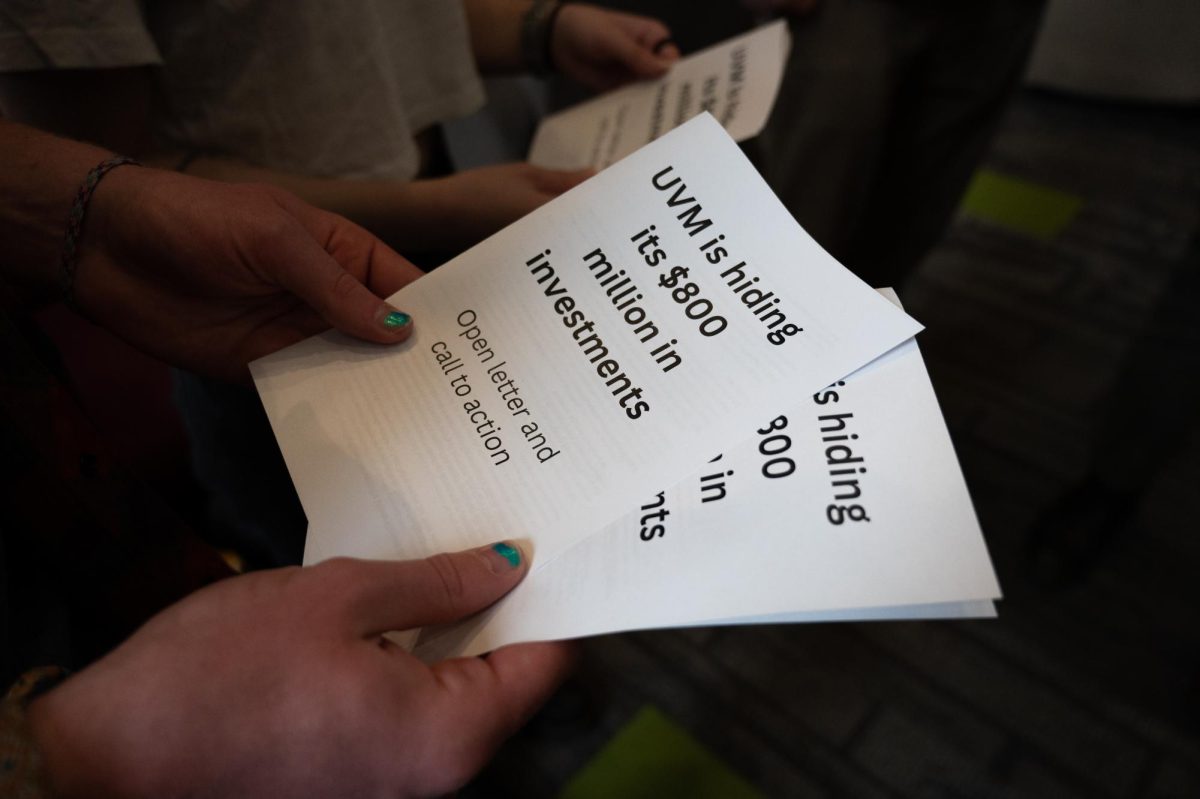At approximately 4:30 on Oct 22. the Marble Court was teeming with crowds of people who had come to see the intricate sand mandala that Buddhist monks Lobsang Tashi and Tenzin Thutop had spent a week creating. Children peered through the columns of the staircase, their parents hovering over them. Students perched on the windowsills for a better view. Finally, the monks emerged into the space set aside for the creation of the mandala. After a speech on the making, history and purpose of the mandala, Tenzin Thutop presentes those at the Fleming Museum who made this exhibit possible with white, silk scarves and then the deconstruction ceremony began.It was only recently that the Dalai Lama allowed for mandalas to be created in public. In the past, mandalas were reserved for sacred spaces. “[Mandalas] used to be very private, you know,” Tenzin Thutop said. “Then His Holiness the Dalai Lama allowed for them to be made in public because there has been pressure to preserve Tibetan culture.””It is important to watch the process because this is the compassion mandala, and the architecture is based on the teaching of the Buddha himself in 600 B.C,” Thutop said. Much of the interest in the mandala exhibit, along with an interest and dedication to Tibetan culture, stemmed from a lack of knowledge among some members of the crowd as to what the purpose of a mandala actually is.”A mandala is a divine mansion. It is a residence of celestial beings, a palace. [We believe] some deities reside there,” Thutop said.This particular mandala is the mandala of Chenrezig (Avalokiteshvara), the Buddha of Great Compassion. Tenzin Thutop and Lobsang Tashi spent approximately four of their 13 years at the Namgyal Monastery in India learning the art of making mandalas. Colored sand is poured through metal cones while the monk creates vibrations along the edges of the cone. Tibetan monks believe that the mandala will bring feelings of harmony and compassion to whatever space it is in. “The mandala seemed like a great way to reach out to the Tibetan community in Burlington,” Christina Fearon, the curator of the Fleming Museum, said. “The turn?out has been fantastic.”Kerrie Lohr, a junior who works at the front desk of the Fleming museum, agreed that the number of people coming to the Fleming Museum for the making of the mandala is impressive. “I’ve never seen so many people in the Fleming,” she said. “I’d say about 90 percent of the people who have come in today are here to see this exhibit.”In the ceremony itself, Thutop and Tashi invited the crowd to chant along in whatever way they were most comfort?able, and began the ceremonial chants. Little by little, Tenzin Thutop gathered up small bits of sand from each part of the mandala, placing them in a glass vase that Lobsang Tashi held for him. Soon they begin to sweep up the sand, chanting all the while, then moving it with their hands into the vase. As they did this, a hum rose from the crowd, eager to participate in this ceremony and to cultivate “good energy,” as Tenzin Thutop instructed, by adding to the sacred chants. Immediately following this ceremony, a bus transported anyone that desired to accompany the monks and the remains of the mandala to Lake Champlain. There, the monks poured the remains into the water with a vase of milk and handfuls of flower petals that they distributed amongst the crowd.”It is reality that everything has an end. The mandala must end because that is reality, and reality is impermanent,” Tenzin Thutop said. “We try to live in harmony and not to end with negativity, because it is useless to harbor negativity. We must try to live with compassion so when the time comes, we will go with peace.”












